


Notice: This is the official website of the All Empires History Community (Reg. 10 Feb 2002)
Forgotten Polish Exodus to Iran |
Post Reply 
|
| Author | |
Maziar 
Chieftain 
Arteshbod Joined: 06-Nov-2005 Location: Germany Online Status: Offline Posts: 1155 |
 Quote Quote  Reply Reply
 Topic: Forgotten Polish Exodus to Iran Topic: Forgotten Polish Exodus to IranPosted: 11-Feb-2006 at 18:33 |
|
http://www.washingtonpost.com/ac2/wp-dyn/A53268-2000Nov22?la nguage=printer In September 1939, Hitler and Stalin pounced on Poland, dismembering it in one of the bleakest chapters of Polish history. Joseph Stalin had tens of thousands of Poles carted off to his Russian prison camps, but when Adolf Hitler's Nazi Germany invaded the Soviet Union in 1941, Stalin freed the Poles and said they could join a Polish army being formed by the Allies.
http://www.immi.gov.au/research/publications/langfitt/langfi tt22.htm Pahlavi looked very nice to us. After two years, we couldn't believe that there was so much food, especially the fruit on the stalls. In the mornings the Iranian boys would come along the beaches selling raw or cooked eggs. It was a beautiful feeling. The army made very primitive camps - some very large tents and thatched roof shelters which leaked when it rained. We slept on the sand and the latrines were a meeting place where we could chat because you had to wait fifteen or twenty minutes in a queue. (Zdzislawa Wasylkowska)
Kr�likowski (1983, p. 70-71) maintained that the authorities in Tehr�n were not ready to receive such large numbers of refugees and had little conception of what a poor state they would be in on arrival. Accommodation was assigned as it could be found and ranged from an 'incomplete munitions factory' to 'veritable tent cities' scattered throughout Tehr�n. As a consequence, many people experienced both separation and reunion in Tehran.
Edited by Maziar |
|
 |
|
Alborz 
Earl 
Joined: 02-Nov-2005 Online Status: Offline Posts: 256 |
 Quote Quote  Reply Reply
 Posted: 11-Feb-2006 at 18:47 Posted: 11-Feb-2006 at 18:47 |
|
THANK YOU MAZIAR heres another one: Iran and the Polish Exodus from Russia 1942By: Ryszard Antolak Exhausted by hard labour, disease and starvation - barely recognizable as human beings - we disembarked at the port of Pahlavi (Anzali). There, we knelt down together in our thousands along the sandy shoreline to kiss the soil of Persia. We had escaped Siberia, and were free at last. We had reached our longed-for Promised Land.- Helena Woloch. In Tehran's Dulab cemetery, situated in a rundown area of the city, are the graves of thousands of Polish men, women and children. It is not the only such cemetery in Iran, but it is the largest and most well-known. All of the gravestones, row upon row of them, bear the same date: 1942. In that year, Iran stood as a beacon of freedom and hope for almost a million Polish citizens released from the Soviet labour camps of Siberia and Kazakhstan. After enduring terrible conditions travelling across Russia, 115,000 of them were eventually allowed to enter Iran. Most of them went on to join the allied armies in the Middle East. The rest (mostly women and children) remained guests of Iran for up to three years, their lives totally transformed in the process. They never forgot the debt they owed to the country that had so generously opened its doors to them. Their reminiscences, as well as the many graves left behind in Tehran, Anzali and Ahvaz, are testimony to a chapter of Iranian history almost erased from the public memory. *From Poland to Iran* Their fate was completely changed in June 1941 when Germany unexpectedly attacked Russia. In need of as many allies it could find, Russia agreed to release all the Polish citizens it held in captivity.[2] Shortly afterwards, provision was also made for the creation of an army from these newly-freed prisoners. It was to be commanded by General Wladyslaw Anders, recently released from the Lubyanka prison in Moscow. Stalin intended to mobilize this new army immediately against the Germans in the West; but Anders persuaded him to hold back until the Poles had recovered their health and strength after two years of exhaustion in the labour camps. pt onwards by the rumours that Stalin was about to allow some of them to leave his Soviet Paradise , these former prisoners of the Gulag system began a desperate journey southwards, some of them on foot, to reach the reception camps set up for them on the borders of Iran and Afghanistan. They travelled thousands of miles from their places of exile in the most distant regions of the Soviet Union. It was an exodus of biblical proportions in terrible conditions. Many froze to death on the journey or starved. Others kept themselves alive by selling whatever personal objects they had been fortunate enough to have brought with them. Exhausted mothers, unable to walk any further, placed their children into the arms of strangers to save them from certain death.[3] Arrived at the army reception camps in Tashkent, Kermine, Samarkand and Ashkhabad, the refugees attempted to enlist in the Polish army, for hich the Soviets had allocated some food and provisions. There was nothing, however, for the hundreds of thousands of hungry civilians, mostly women and children, who were camped outside the military bases. nstead of increasing provisions to the camps, the Soviets actually cut them. In response, the Polish army enlisted as many of the civilians as they could into its ranks, even children (regardless of age or sex) to save them from starvation. In the baking heat, dysentery, typhus, and scarlet fever became rampant. Communal graves in Uzbekistan could not keep up with the numbers who were dying. By 1942, only half of the 1.7 million Polish citizens arrested by the Soviets at the start of the war were still alive. Their salvation finally came when Stalin was persuaded to evacuate a fraction of the Polish forces to Iran. A small number of civilians were allowed to accompany them. The rest had no option but to remain behind and face their fate as Soviet citizens. Pahlavi* A makeshift city comprising over 2000 tents (provided by the Iranian army) was hastily erected along the shoreline of Pahlavi to accommodate the refugees. It stretched for several miles on either side of the lagoon: a vast complex of bathhouses, latrines, disinfection booths, laundries, sleeping quarters, bakeries and a hospital. Every unoccupied house in the city was requisitioned, every chair appropriated from local cinemas. Nevertheless, the facilities were still inadequate. The Iranian and British officials who first watched the Soviet oil tankers and coal ships list into the harbour at Pahlavi on the 25th March 1942 had little idea how many people to expect or what physical state they might be in. Only a few days earlier, they had been alarmed to hear that civilians, women and children, were to be included among the evacuees, something for which they were totally unprepared.[4] The ships from Krasnovodsk were grossly overcrowded. Every available space on board was filled with passengers. Some of them were little more than walking skeletons covered in rags and lice. Holding fiercely to their precious bundles of possessions, they disembarked in their thousands at Pahlavi and kissed the soil of Persia. Many of them sat down on the shoreline and prayed, or wept for joy. They were free at last! They had not quite escaped, however. Weakened by two years of starvation, hard labour and disease, they were suffering from a variety of conditions including exhaustion, dysentery, malaria, typhus, skin infections, chicken blindness and itching scabs. General Esfandiari, appointed by the Iranians to oversee the evacuation, met with his Polish and British counterparts to discuss how to tackle the spread of Typhus, the most serious issue facing them. It was decided to divide the reception area into two parts: an infected area and a clean area, separated from each other by a barbed wire fence. On arrival, those who were suspected of having infectious diseases were quarantined in the closed section for four days, or else sent to the camp hospital. 40% of patients admitted to the hospital were suffering from typhus. Most of these died within a month or two of arriving. At this time there were only 10 doctors and 25 nurses in the whole of Pahlavi. In the clean area, the arrivals were channelled into a series of tents where their clothes were collected and burned. They were then showered, deloused, and some of them had their heads shaved in the interests of hygiene. As a result, women began to wear headscarves to conceal their baldness. Finally, they were given sheets, blankets and fresh clothes by the Red Cross and directed to living quarters. Food provision was inappropriate. Corned beef, fatty soup and lamb, distributed by the British soldiers, caused havoc with digestions accustomed only to small pieces of dry bread. They could not tolerate the rich food, and a large number died purely from the results of over-eating. Beggarly, unwell and dishevelled, the Polish refugees were nourished more by the smiles and generosity of the Iranian people than by the food dished out by British and Indian soldiers. Iran at that time was going through one of the unhappier episodes of her history. Occupied by the Russians and the British, her relations with the soldiers of these two countries were understandably strained and difficult. With the Poles, however, there was an immediate affinity which was evident from the moment they arrived and which extended from the lowest to the highest levels of society. On 11th April 1942 Josef Zajac, chief of Polish forces in the Middle East, noted in his diary on a visit to Tehran that the Persian population were better disposed to them than either the British or the White Russian �migr�s (who were distinctly hostile). His relationship with the Iranian Minister of War, Aminollah Jahanbani (released a year earlier from prison for plotting against Shah Reza Pahlavi), was genuinely friendly and cordial. During the course of their discussions together on 13th April 1942, they discovered that they had been students together at the same French military academy.[5] Personal friendships such as these further smoothed relations between the two populations. Contacts between Polish and Persian soldiers were equally cordial. The custom of Polish soldiers saluting Persian officers on the streets sprang up spontaneously, and did not go unnoticed by the Iranians. *Isfahan: The City Of Polish Children* The first major orphanage to be opened was situated in Mashhad, and was run by an order of Christian nuns. It opened its doors on March 12 1942. The children at this home were predominantly those transported over the border from Ashkabad by trucks. Eventually, however, Isfahan was chosen as the main centre for the care of Polish orphans, particularly those who were under the age of seven. They began arriving there on 10th April 1942. It was believed that in the pleasant surroundings and salutary air of this beautiful city, they would have a better chance of recovering their physical and mental health. Iranian civil authorities and certain private individuals vacated premises to accommodate the children. Schools, hospitals and social organizations sprang up quickly all over the city to cater for the growing colony. The new Shah took especial interest in the Polish children of Isfahan. He allowed them the use of his swimming pool, and invited groups of them to his palace for dinner. In time, some of the children began to learn Farsi and were able to recite Persian poems to a delegation of Iranian officials who visited the city. At its peak, twenty-four areas of the city were allocated to the orphans. As a result, Isfahan became known ever after in Polish �migr� circles as The City of Polish Children. *Exile in Iran* Tehran s five transit camps, one army and four civilian, were situated in various parts of the metropolitan area. Once again, certain Iranian authorities and individuals volunteered buildings (even sports stadiums and swimming baths) for the exclusive use of the refugees. Camp No.2, however, (the largest) was nothing more than a collection of tents outside the city. Camp No. 4, was a deserted munitions factory. No. 3 was situated in the Shah s own garden, surrounded by flowing water and beautiful trees There was also a Polish hospital in the city, a hostel for the elderly, an orphanage (run by the Sisters of Nazareth) and a convalescent home for sick children (Camp No. 5) situated in Shemiran. Most able-bodied men (and women) of military age enlisted forthwith in the army and were assigned to military camps. Their stay in Iran was a short one. The army was quickly evacuated to Lebanon and included in the Polish forces being reformed there. Their route to Lebanon was either overland from Kermanshah (6 rest stations were set up for them along the way to Latrun), or by ship from the southern port of Ahvaz. The remainder women, children and men over the age of military service - remained behind in Iran, some of them for periods up to three years. Something more than food and clothing are necessary for the human spirit to survive and grow. Art and Culture are antibodies to feelings of despondency and decay, and within a few months of their arrival, the exiles had set up their own theatres, art galleries, study circles, and radio stations all over the city. Artists and craftsmen began to give exhibitions. Polish newspapers began to spring up; and restaurants began to display Polish flags on the streets. Among the organizations formed to care for the educational and cultural needs of the exiles was the influential Institute of Iranian Studies begun by a small group of Polish academicians.[7] In three years from 1943 to 1945 this group published three scholarly volumes and scores of other articles on Polish-Iranian affairs. Most of the material was later translated into Farsi and published under the title Lahestan. By 1944, however, Iran was already emptying of Poles. They were leaving for other D.P camps in places such as Tanganyika, Mexico, India, New Zealand and the UK. Their main exit route was Ahvaz, where an area of the city still called Campolu today, is a distant echo of its original name Camp Polonia. Mashhad s last children left on the 10 June 1944. Ahvaz finally closed its camp doors in June 1945. The last transport of orphans left Isfahan for Lebanon on the 12 October 1945. *What Remains* The Poles took away with them a lasting memory of freedom and friendliness, something most of them would not know again for a very long time. For few of the evacuees who passed through Iran during the years 1942 1945 would ever to see their homeland again. By a cruel twist of fate, their political destiny was sealed in Tehran in 1943. In November of that year, the leaders of Russia, Britain and the USA met in the Iranian capital to decide the fate of Post-war Europe. During their discussions (which were held in secret), it was decided to assign Poland to the zone of influence of the Soviet Union after the war. It would lose both its independence and its territorial integrity. The eastern part of the country, from which the exiles to Iran had been originally expelled, would be incorporated wholesale into the Soviet Union. The Polish government was not informed of the decision until years later, and felt understandably betrayed. 48,000 Polish soldiers would lose their lives fighting for the freedom of the very nations whose governments had secretly betrayed them in Tehran, and later (in 1945) in Yalta.[9]
http://www.parstimes.com/history/polish_refugees/exodus_russ ia.html |
|
|
"Who so shall worship Ahura Mazda, divine blessing will be upon him, both while living and when dead" Darius The Great

|
|
 |
|
Alborz 
Earl 
Joined: 02-Nov-2005 Online Status: Offline Posts: 256 |
 Quote Quote  Reply Reply
 Posted: 11-Feb-2006 at 18:48 Posted: 11-Feb-2006 at 18:48 |
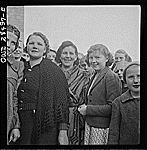
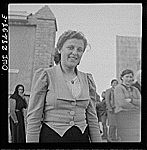 Teheran, Iran. Polish refugee families awaiting evacuation. 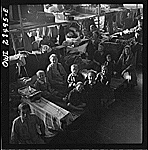 Teheran, Iran. Polish refugee families awaiting evacuation. 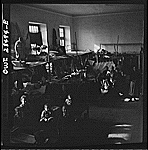 Teheran, Iran. Polish refugee families awaiting evacuation. 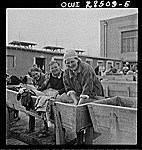 Teheran, Iran. Women doing their laundry in a Polish evacuee camp operated by the Red Cross 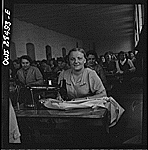 Teheran, Iran. Women making their own clothing at a Polish evacuee camp operated by the Red Cross 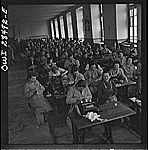 Teheran, Iran. Women making their own clothing at a Polish evacuee camp operated by the Red Cross 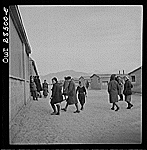 Teheran, Iran. Polish evacuee children playing in the dormitory courtyard at a camp operated by the Red Cross 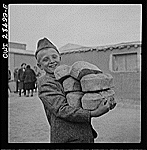 Teheran, Iran. Polish youngster carrying an armload of loaves of bread made from Red Cross flour at an evacuation camp  Teheran, Iran. Baby girl at a Polish evacuee camp with her mother 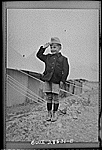 Teheran, Iran. Young Polish refugee at an evacuation camp operated by the Red Cross 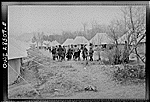 Teheran, Iran. Polish refugee colony operated by the Red Cross has a colorful setting in the outskirts of the city 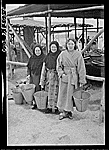 Teheran, Iran. Polish refugees at an American Red Cross camp using woolen bathrobes donated by the Red Cross as overcoats 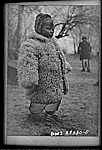 Teheran, Iran. Little Polish girl in a big sheepskin coat who is at an evacuation camp operated by the Red Cross 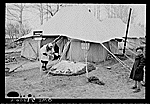 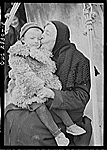 Teheran, Iran. Polish woman and her grandchildren shown in an American Red Cross evacuation camp as they await evacuation to new homes 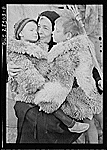 Teheran, Iran. Polish woman and her grandchildren shown in an American Red Cross evacuation camp as they await evacuation to new homes 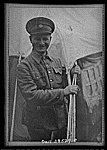 Teheran, Iran. A Polish refugee who is a guard at an evacuee camp operated by the Red Cross. He had worked in Chicago, Illinois, but returned in 1934 to Poland 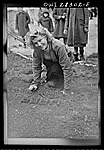 Teheran, Iran. Polish girl landscaping the patch of earth before her tent at an evacuation camp operated by the Red Cross. The Poles take great pride in the cleanliness of their camp Photographer: Nick Parrino |
|
|
"Who so shall worship Ahura Mazda, divine blessing will be upon him, both while living and when dead" Darius The Great

|
|
 |
|
Mosquito 
Caliph 

Suspended Joined: 05-Aug-2004 Location: Sarmatia Online Status: Offline Posts: 2537 |
 Quote Quote  Reply Reply
 Posted: 11-Feb-2006 at 23:59 Posted: 11-Feb-2006 at 23:59 |
One of the most stupid claims iv ever seen on AE forums. |
|
|
"I am a pure-blooded Polish nobleman, without a single drop of bad blood, certainly not German blood" - Friedrich Nietzsche
|
|
 |
|
Maziar 
Chieftain 
Arteshbod Joined: 06-Nov-2005 Location: Germany Online Status: Offline Posts: 1155 |
 Quote Quote  Reply Reply
 Posted: 12-Feb-2006 at 01:50 Posted: 12-Feb-2006 at 01:50 |
|
Ok so tell us your version of the history, at least i havn't claimed it, i only copy pasted.
|
|
 |
|
Behi 
Sultan 
Retired AE Moderator Joined: 27-Apr-2005 Location: Iran Online Status: Offline Posts: 2268 |
 Quote Quote  Reply Reply
 Posted: 12-Feb-2006 at 04:27 Posted: 12-Feb-2006 at 04:27 |
 Thanks for shareing Thanks for shareingEdit: Weird!! I've that problem now, I don't see any pic in Alborz post Edited by Land of Aryan |
|
 |
|
Post Reply 
|
| Forum Jump | Forum Permissions  You cannot post new topics in this forum You cannot reply to topics in this forum You cannot delete your posts in this forum You cannot edit your posts in this forum You cannot create polls in this forum You cannot vote in polls in this forum |
Copyright ©2001-2009 Web Wiz
This page was generated in 0.070 seconds.











 Printable Version
Printable Version Google
Google Delicious
Delicious Digg
Digg StumbleUpon
StumbleUpon Windows Live
Windows Live Yahoo Bookmarks
Yahoo Bookmarks reddit
reddit Facebook
Facebook MySpace
MySpace Newsvine
Newsvine Furl
Furl Topic Options
Topic Options polish elementary school in Iran
polish elementary school in Iran polish children in Iran
polish children in Iran Isfahan
Isfahan